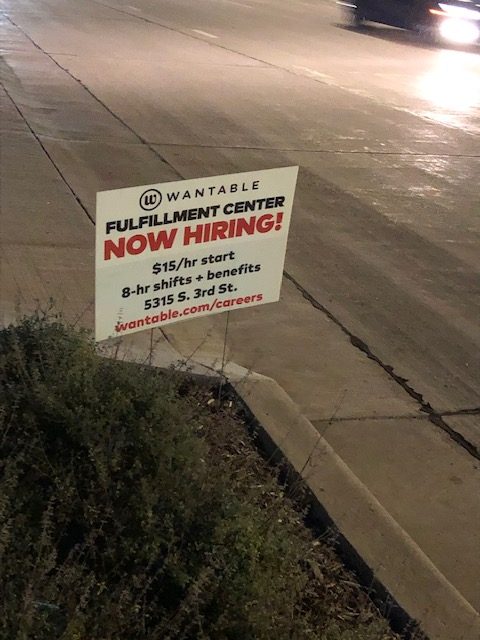The mystery of the mutinous workers

Sign by a main road in Milwaukee in the middle of October, 2021. Photo: Rashmee Roshan Lall
The US national press is preoccupied with beltway politics but the biggest story may actually be the impenetrable mystery of the ‘I quit’ brigade: How on earth are all those workers who quit their jobs managing to survive? How do they put food on the table? How do they pay their bills?
The number of unfilled retail jobs rose to 1.1 million in July. Across sectors — restaurant, hotel, construction, transport — there is a paucity of staff. It’s having an unexpected but visible effect — shelves are empty or half-empty; there are gaps in product lines; restaurants are reducing their hours of service. (The Frontier Restaurant in the tiny village of Amherst, for instance, now closes in the afternoon because it just doesn’t have enough people to cook and serve.)
In Wisconsin in mid-October, I heard Walmart offer $23.55 per hour to anyone willing to work in the warehouse. In September, Walmart boosted the minimum hourly rate at its Sam’s Club from $11 to $15 this month. Other goodies are being doled put by the sackful by retail behemoths: Amazon has signing bonuses of $3,000; Dollar General is offering drivers $5,000 starting bonuses; Macy’s is paying its existing staff up to $500 if they refer a friend or family member.
Chains are becoming less sniffy too about the actual hiring process. Macy’s, which is looking to hire nearly 50,000 workers for the holiday season, has been insisting its online job interviews will take just five minutes. Walmart has slashed the time it takes to hire workers from 14 days cut to roughly 24 hours and is also making it easier for new hires to qualify for subsidised college tuition. Best Buy, too, is offering seasonal employees discounts of 5 to 25 per cent on college fees, as well as discounted gym memberships and home and car insurance.
All of that is to be expected in a tight labour market. But it still doesn’t answer the key question: novel incentives to work are the icing on the cake (or even the cake) but they can’t be called bread and butter. How are all these reluctant workers – the ones who’re still unpersuaded they need to go back to their sector’s version of the coalface – putting food on the table and keeping the bills paid?
The Republicans continue to blame the Democrats for supposedly “paying people not to work,” even though supplemental unemployment benefits expired on September 6, Labour Day in the US. Incidentally, the 26 states, mostly Republican-controlled, that withdrew those benefits even earlier did not see any particular rush to get back to work either.
What are people living on?

